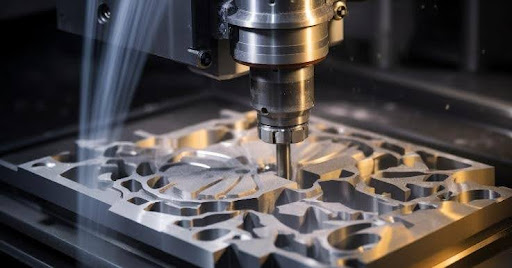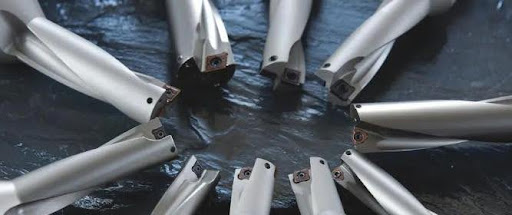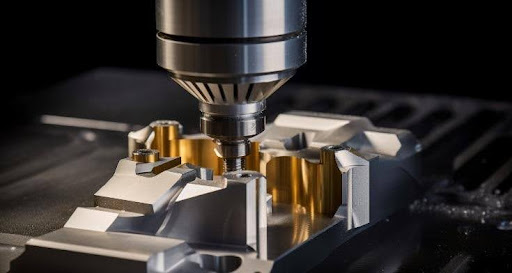
The Impact of CNC Machining on Lightweight CNC Car Parts for Improved Fuel Efficiency
27 August 2024
Revolutionizing CNC Machining with Advanced Aluminum Casting Techniques
28 August 2024The importance of tool selection in machining is self-evident. Learning to choose tools can help you work more easily.
1. The most important thing in machining is the tool
When a tool stops working, production is interrupted. However, not all tools are equally important. The tool with the longest cutting time has the most significant impact on the production cycle and should receive more attention. Similarly, tools with strict requirements for machining key components and tolerances should also be given careful consideration. Additionally, tools with poor chip control, such as drills, grooving cutters, and threading tools, should be closely monitored, as inadequate chip control can lead to downtime.

2. Matching with the machine tool
It's important to remember that tools are categorized as right-hand tools and left-hand tools. Choosing the correct tool is crucial.
In general, right-hand tools are suitable for counterclockwise (CCW) machine tools (viewed along the spindle direction), while left-hand tools are suitable for clockwise (CW) machine tools. If you have several lathes, some of which only accommodate left-hand tools, and others are compatible with both left and right-hand tools, then it's best to choose left-hand tools. For milling, people typically opt for more versatile tools. However, while such tools cover a wider range of processing, they also reduce the tool's rigidity, increase deflection deformation, lower cutting parameters, and are more likely to cause processing vibration. Additionally, the robot for changing tools on the machine tool also limits the size and weight of the tool. If you purchase a machine tool with an internal cooling hole in the spindle, it's advisable to select a tool with an internal cooling hole as well.
3. Matching with the material being processed
Carbon steel is the most commonly machined material, so most tools are designed to optimize processing of this material. It's important to select the right blade according to the material being processed. Tool manufacturers offer a variety of tool bodies and matching blades for machining non-ferrous materials such as high-temperature alloys, titanium alloys, aluminum, composite materials, plastics, and pure metals.
When machining the above materials, it's essential to choose a tool with matching materials. Most brands offer various series of tools that indicate the materials suitable for machining. For instance, DaElement's 3PP series is primarily used for machining aluminum alloys, the 86P series is specifically for machining stainless steel, and the 6P series is specifically for machining high-hardness steel.
4. Tool specifications
A common mistake is selecting a turning tool that is too small and a milling tool that is too large. Larger turning tools offer better rigidity, while larger milling tools are not only more expensive but also take longer to cut. In general, larger tools are more expensive than smaller ones.
5. Choose replaceable blade or regrinding tools
The principle to follow is simple: try to avoid regrinding tools. Except for a few drills and face milling cutters, opt for replaceable blades or replaceable head tools when conditions permit. This will help to save on labor costs and achieve consistent processing results.
6. Tool material and brand
When selecting tool material and brand, it's important to consider the performance of the material being CNC machining processed, the maximum speed, and the feed rate of the machine tool. It is recommended to choose a common tool brand for the material group being processed, typically a coated alloy brand. You can refer to the "Grade Application Recommendation Chart" provided by the tool supplier. In practice, a common mistake is trying to address tool life issues by switching to similar material brands from other tool manufacturers. If your current tool could be improved, switching to a similar brand from another manufacturer is likely to yield similar results. To effectively address tool failure, it's necessary to identify the root cause of the problem.

7. Power requirements
Remember to utilize all resources efficiently. If you purchase a 20hp milling machine, ensure to select the appropriate tools and machining parameters to utilize 80% of the machine's power, given that the workpiece and fixture permit. Give particular consideration to the power/speed table in the machine's user manual and opt for tools that can effectively carry out the best cutting application within the machine's power range.
8. Number of cutting edges
The principle is that more is better. Buying a turning tool with twice the cutting edges does not mean paying twice the price. Over the past decade, advanced designs have doubled the number of cutting edges on grooving cutters, parting cutters, and some milling inserts. It is not uncommon to replace a milling cutter with only four cutting edges with an advanced milling cutter with 16 cutting edges. Increasing the number of effective cutting edges also directly affects the worktable feed and productivity.
9. Choose a monolithic or modular tool
Small tools are better for monolithic design, while large tools are better for modular design. When large tools break, users often prefer to replace small and inexpensive parts to get a new tool, especially for grooving and boring tools.
10. Choose a single tool or a multi-function tool
The smaller the part, the more suitable it is for a multi-function tool. For example, a multi-function tool can combine drilling, turning, internal hole processing, threading, and chamfering. Of course, the more complex the workpiece, the more suitable it is for a multi-function tool. The machine tool can only bring you benefits when it is cutting, not when it is down.
11. Choose a standard tool or a special tool
With the rise of CNC machining centers, there is a common belief that the shape of a workpiece can be achieved through programming, eliminating the need for special tools. However, special tools continue to make up 15% of total tool sales. Why is this the case? Special tools are still necessary to meet precise workpiece size requirements, reduce processes, and shorten the processing cycle. In mass production, special tools can effectively expedite the processing cycle and cut costs.
12. Chip control
Remember, your primary goal is to focus on processing the prototype machined parts rather than the chips themselves. However, it's important to note that the chips can provide valuable insights into the cutting status of the tool. Many people have misconceptions about chips because they have yet to be trained to interpret them. Keep in mind the following principle: good chips will not compromise the processing, while bad chips will have the opposite effect.
Most cutting tools are equipped with chip breakers, which are tailored to the specific feed rate, whether it's light-cutting finishing or heavy-cutting roughing.
Smaller chips are more difficult to break. Managing chips is particularly challenging when processing tough materials. While the material being processed cannot be altered, you can enhance the tool by adjusting the cutting speed, feed rate, cutting depth, tool tip radius, and other factors. The optimization of both chips and processing requires careful consideration.

13. Programming
When it comes to tools, workpieces, and CNC machines, you often need to define tool paths. Ideally, you will understand basic machine code and have an advanced CAM software package. Tool paths must take into account tool characteristics such as ramping angle, rotation direction, feed, and cutting speed. Each tool has corresponding programming techniques to shorten the machining cycle, improve chip removal, and reduce cutting forces. A good CAM software package can save labor and improve productivity.
14. Choose innovative tools or conventional mature tools
At the current rate of development of advanced technology, the productivity of cutting tools can double every 10 years. Compared with the cutting parameters recommended for tools 10 years ago, you will find that today's tools can double the processing efficiency while reducing cutting power by 30%. The new tool alloy matrix is stronger and tougher, which can achieve higher cutting speeds and lower cutting forces. Chip breakers and grades are less specific to applications and more versatile.
At the same time, modern tools have also increased versatility and modularity, which together reduce inventory and expand tool applications. Tool development has also led to new product designs and processing concepts, such as the King cutter, which combines CNC machining turning and grooving functions, and high-feed milling cutters, which have promoted high-speed machining, minimal lubrication and cooling (MQL) machining, and hard turning technology. For these and other reasons, you also need to follow the most preferred processing methods and learn about the latest advanced tool technology. Otherwise, you are in danger of falling behind.
15. Price
The price of the tool is important, but it is not as important as the production cost paid by the tool. Although the tool has its corresponding price, the real value of the tool lies in the role it performs for productivity. Usually, the lowest-priced tool is the tool that causes the highest production cost. The price of the cutting tool accounts for only 3% of the cost of the part. So please focus on the productivity of the tool, not its purchase price.
If you wanna know more or inquire, please feel free to contact [email protected].
Anebon's goal is to understand excellent disfigurement from the manufacturing and supply the top support to domestic and abroad clients wholeheartedly for 2022 High-quality Stainless Steel Aluminum High Precision Custom Made CNC Turning Milling Machining die casting aluminum Spare Parts for Aerospace in order to expand our international market, Anebon mainly supplies our oversea customers Top quality performance mechanical parts, CNC turning and milling services.




